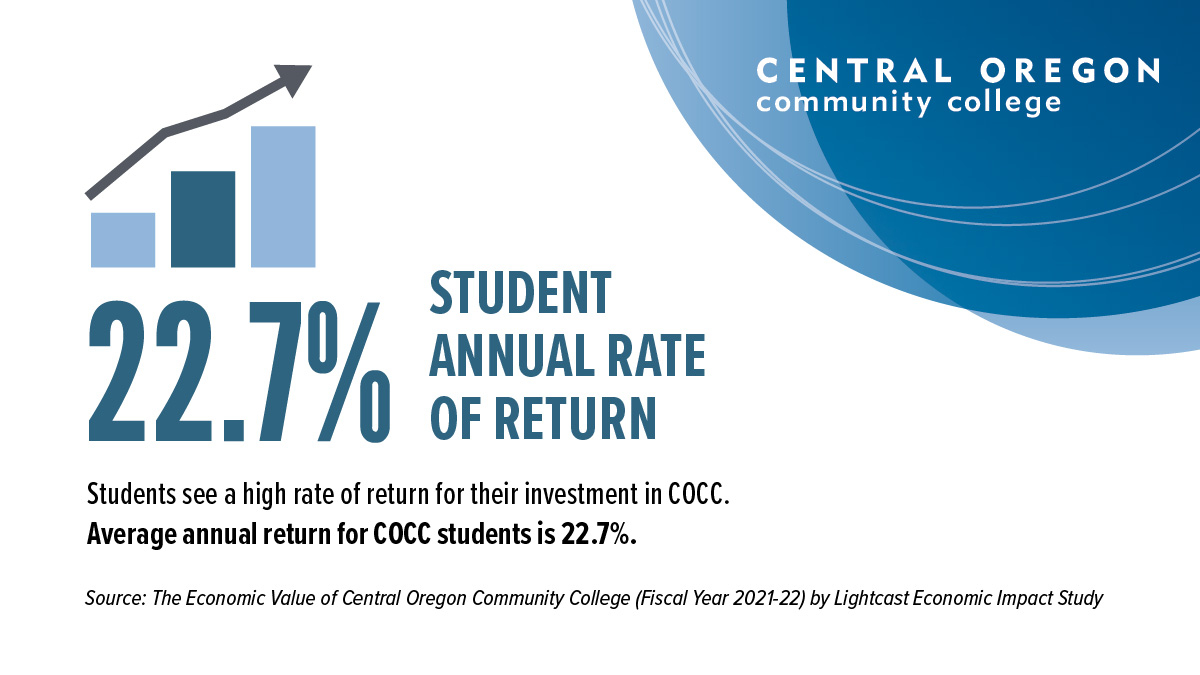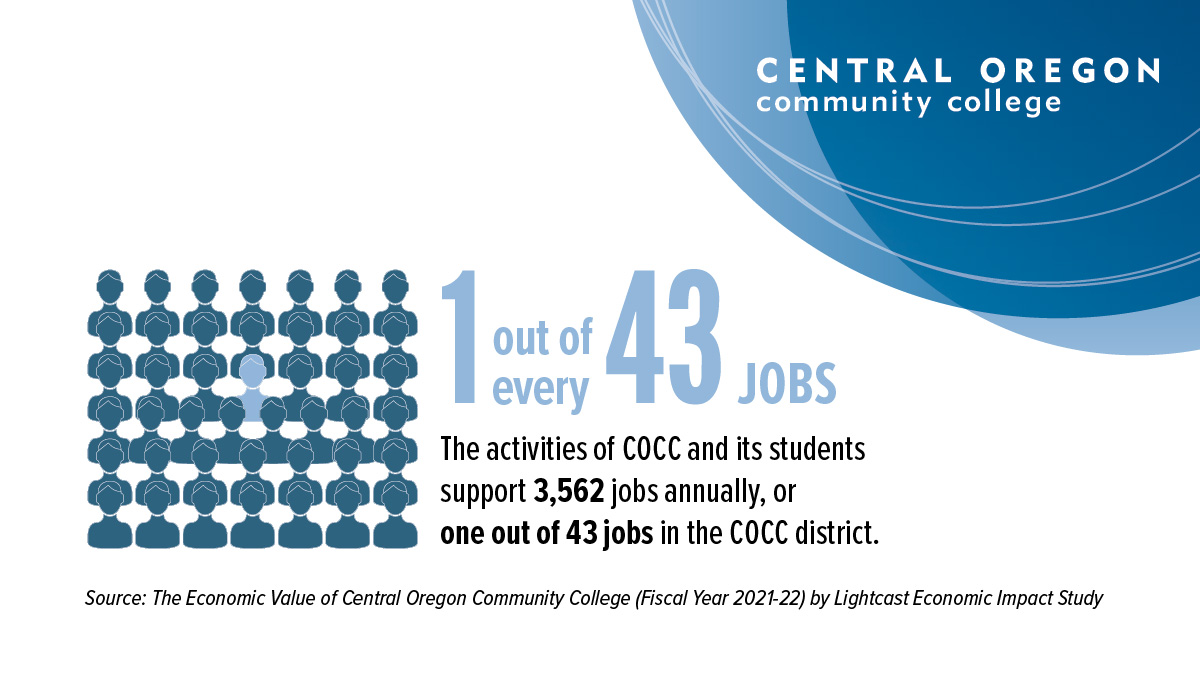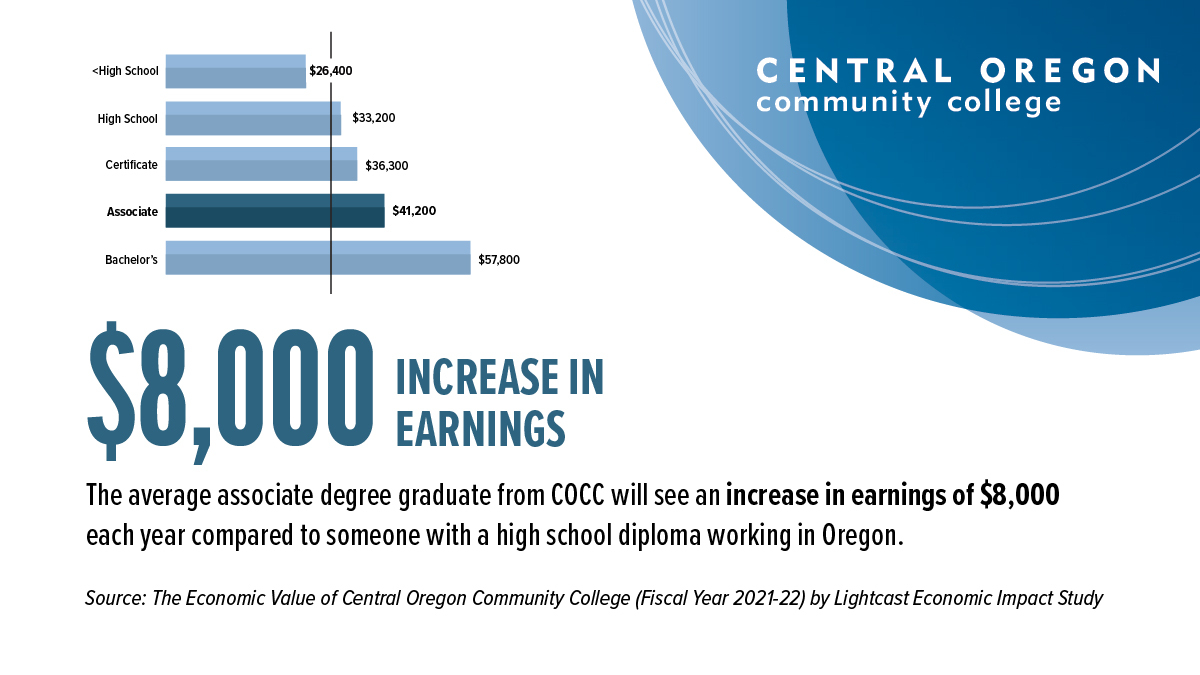COCC Quick Facts
The Economic Value of COCC
A new study demonstrates the transformative value and benefits that Central Oregon Community College generates for the regional economy. Lightcast, a leading provider of economic impact studies and labor market data, has released both statewide and regional reports assessing the economic impact of Oregon’s 17 community colleges. These studies find that COCC creates a strong net-positive impact on the Central Oregon economy and generates a positive return on investment for students, taxpayers, and society.
Rate of Return
The students’ benefit-cost ratio is 4.6. In other words, for every dollar students invest in COCC in the form of out-of-pocket expenses and forgone time and money, they will receive a cumulative value of $4.60 in higher future earnings. Annually, the students’ investment in COCC has an average annual internal rate of return of 22.7%.


Supported Jobs
COCC's total impact can also be expressed in terms of jobs supported. The $289.6 million
impact supported 3,562 regional jobs, using the jobs-to-sales ratios specific to each
industry in the region. This means that one out of every 43 jobs in the COCC District
is supported by the activities of COCC and its students.
Increase in Earnings
In return for their investment, COCC’s students will receive a stream of higher future earnings that will continue to grow throughout their working lives. For example, the average COCC associate degree graduate from FY 2021-22 will see annual earnings that are $8,000 higher than a person with a high school diploma or equivalent working in Oregon.

Source: The Economic Value of Central Oregon Community College (Fiscal Year 2021-22) by Lightcast Economic Impact Study
